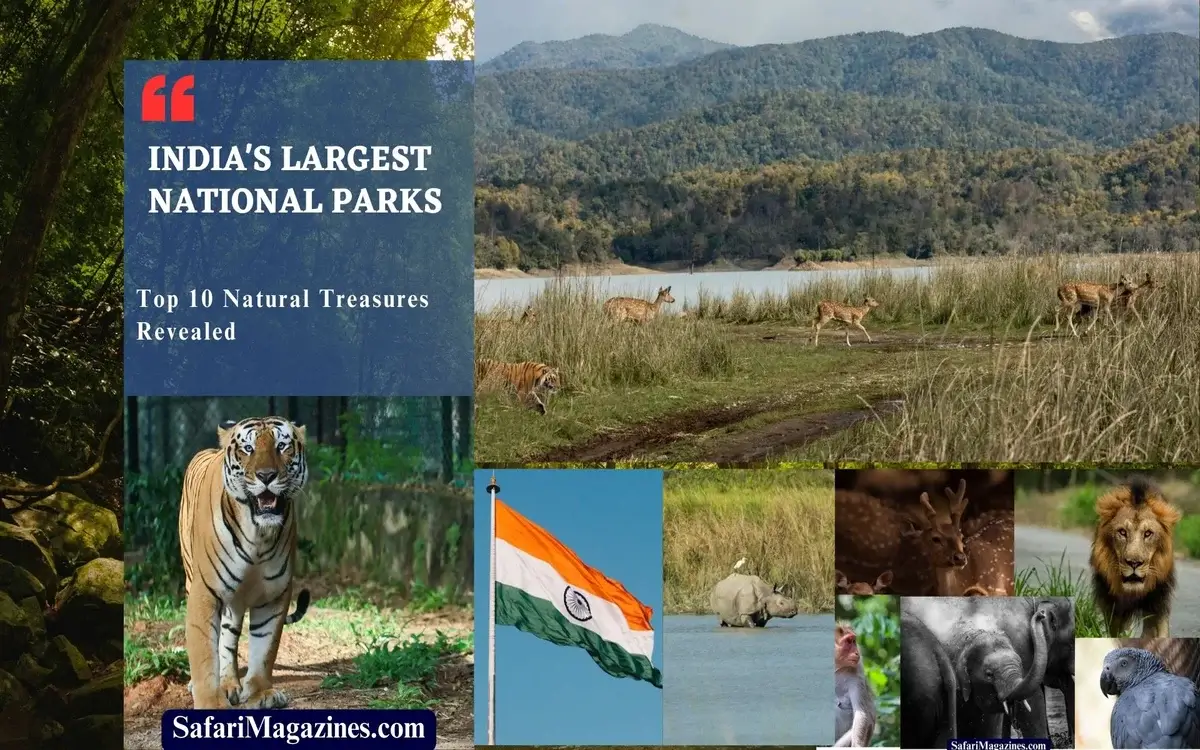
Top 10 Largest National Parks in India, Natural Treasures Revealed, the Ultimate Explorer’s Guide. National parks in India are more than just protected areas. They serve as a haven for the beauty of nature, protecting our planet’s incredible ecosystems. So, National parks in India are an example of environmental conservation, as they serve as habitat for wildlife, providing a place for species to grow undisturbed by human encroachment. These pristine places are carefully managed to preserve biodiversity and maintain ecological balance, making them extremely important in the fight against habitat loss and species extinction. So, let’s explore the largest national parks in India and their significance in preserving our natural heritage.
Table of Contents
ToggleCriteria for Selection of the Top Indian National Parks
The criteria for selecting India’s national parks are as follows:
- Size: We focused on India’s largest national parks to highlight their biodiversity and conservation significance.
- Biodiversity: Priority was given to parks known for their rich vegetation and diversity of wildlife.
- Accessibility: Parks that are easily accessible to tourists were chosen, considering their proximity to major cities and transportation options.
- Visitor Experience: We selected parks offering memorable wildlife safaris, nature trails, and comfortable accommodations.
- Conservation: Highlighted parks have notable conservation efforts, emphasizing the importance of protecting India’s natural heritage.
- Cultural Significance: Considered parks with cultural heritage sites or indigenous communities, enriching the visitor experience.
- Unique Features: Included parks with distinctive landscapes or ecological phenomena, providing diverse exploration opportunities.
Significance of National Parks in India
India boasts an astounding array of ecosystems, from dense rainforests to arid deserts, harboring a staggering diversity of life forms. Indian National Parks are symbols of natural beauty, and the center point of Asia’s national parks. With over 100 national parks spread across the country, India stands as a beacon of biodiversity conservation. However, rapid urbanization, deforestation, and poaching pose grave threats to these fragile ecosystems, underscoring the urgent need for robust conservation efforts.
Focus on Top of Biggest National Parks in India
- Among the large number of national parks in India, several stand out due to their sheer size and ecological importance. These protected areas act as a lifeline for countless species.
- Size matters when it comes to preserving biodiversity on a grand scale. Larger national parks provide larger habitats, allowing for the existence of more diverse species and facilitating ecological processes such as migration and natural selection.
Continue reading: India’s Largest National Parks: Top 10 Natural Treasures Revealed
Top 10 National Parks in India
Hemis National Park

Located in the mesmerizing landscapes of Ladakh, Hemis National Park is the largest national park in India. Its area is spanning over 4,450 sq-km. This pristine wilderness is home to many wildlife such as elusive snow leopards, Asiatic ibex, and numerous avian species.
Here is a brief overview of Hemis National Park, India:
- Location: Ladakh, Jammu and Kashmir.
- Area: Approximately 4,500 sq-km.
- Best Time to Visit: May to September for wildlife sightings.
- Wildlife: Snow leopards, Asiatic ibex, Tibetan wolf, Himalayan marmot, various bird species.
- Plants: Alpine and sub-alpine vegetation including juniper, willow, and birch.
- How to Get There: Accessible by road from Leh, the nearest town, followed by a short trek.
- Limits and Restrictions:
- Permits required for entry
- Limited camping areas
- No open fires allowed.
- Recommendations:
- Hire a local guide for wildlife tracking
- Carry adequate warm clothing and water.
Similipal National Park and Tiger Reserve
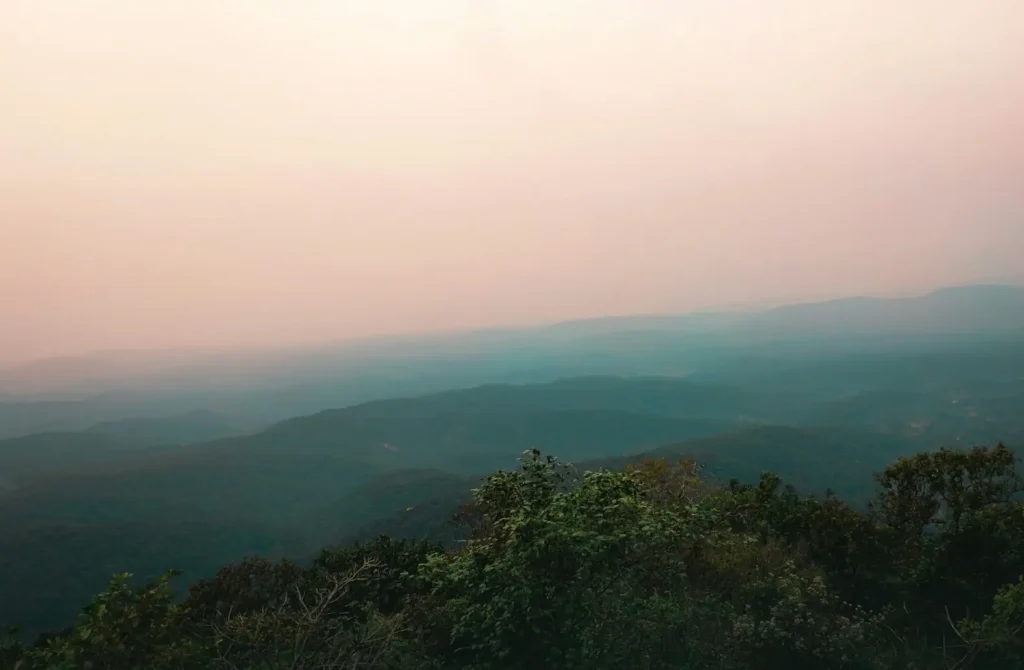
Nestled in the heart of Odisha, Simlipal National Park sprawls over 2,750 sq-km of dense forests and rolling hills. Its diverse habitats harbor iconic species such as Bengal tigers, elephants, and Indian bison, making it a hotspot for wildlife enthusiasts.
- Here is a brief overview of Simlipal National Park, India:
- Location: Mayurbhanj district, Odisha.
- Area: Approximately 2,750 sq-km.
- Best Time to Visit: November to June for pleasant weather and wildlife sightings.
- Wildlife: Bengal tiger, Indian elephant, Indian bison, sambar deer, various bird species.
- Plants: Dense sal forests, grasslands, orchids, and medicinal plants.
- How to Get There: Nearest airport is in Bhubaneswar, followed by a road journey to Baripada town.
- Limits and Restrictions:
- Entry permits required
- Restricted zones for visitors
- No littering or feeding animals.
- Recommendations:
- Book safari permits in advance
- Explore the tribal villages nearby for a cultural experience.
Continue reading: India’s Largest National Parks: Top 10 Natural Treasures Revealed
Gir Forest National Park
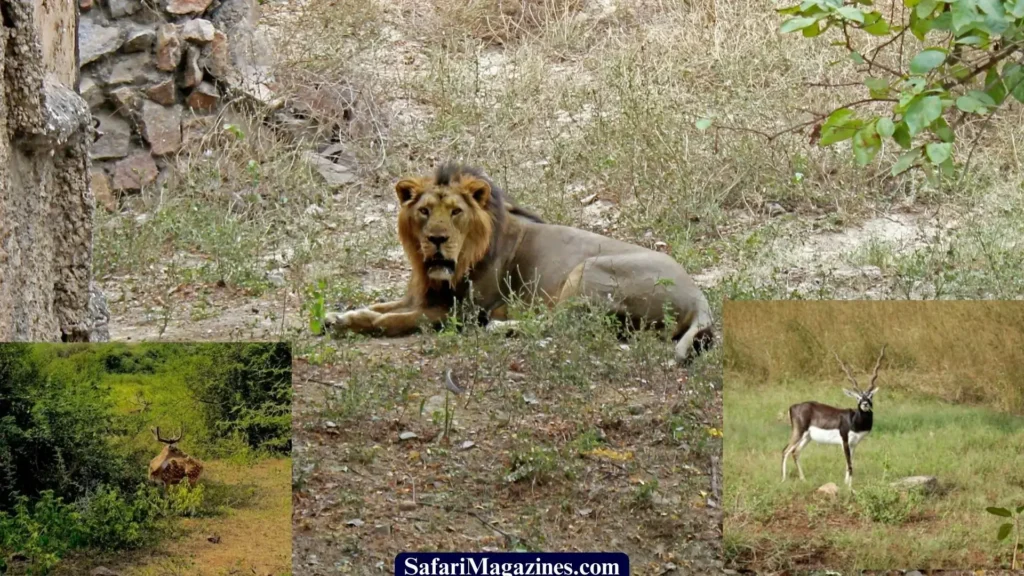
Renowned as the last abode of the Asiatic lion, Gir Forest National Park encompasses approximately 1,450 sq-km of dry deciduous forests in Gujarat. Along with the majestic lions, the park is also home to leopards, deer, and a myriad of bird species.
- Here is a brief overview of Gir Forest National Park, India
- Location: Junagadh district, Gujarat.
- Area: Approximately 1,450 sq-km.
- Best Time to Visit: December to March for pleasant weather and lion sightings.
- Wildlife: Asiatic lion, Indian leopard, Indian sloth bear, Indian striped hyena, various bird species.
- Plants: Dry deciduous forests with teak, khair, and flame of the forest trees.
- How to Get There: Nearest airport is in Rajkot, followed by a road journey to Sasan Gir.
- Limits and Restrictions:
- Entry permits required
- Guided safaris mandatory
- Off-road driving is not permitted
- Recommendations:
- Opt for early morning or late afternoon safaris for better chances of lion sightings
- Respect the local Maldhari community and their traditional lifestyle.
Continue reading: India’s Largest National Parks: Top 10 Natural Treasures Revealed
Jim Corbett National Park
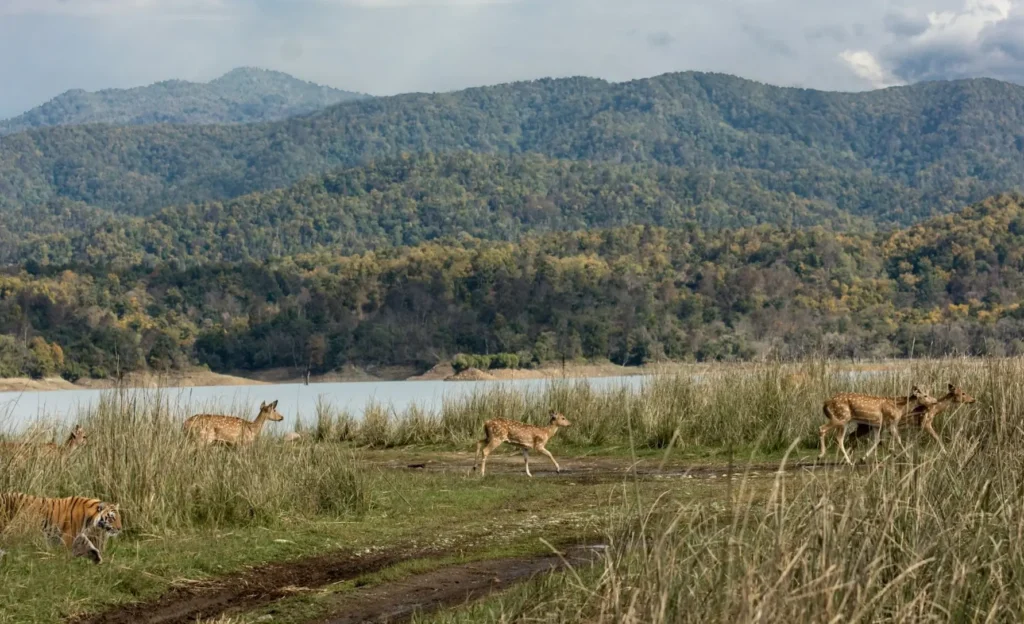
Situated in the foothills of the Himalayas in Uttarakhand, Jim Corbett National Park spans an area of 1,350 sq-km. Named after the legendary hunter-turned-conservationist Jim Corbett. This park is also famous for its population of Bengal tigers and diverse avian species.
Here is a brief overview of Jim Corbett National Park, India
- Location: Nainital and Pauri Garhwal districts, Uttarakhand.
- Area: Approximately 1,350 sq-km.
- Best Time to Visit: November to June for pleasant weather and tiger sightings.
- Wildlife: Bengal tiger, Asian elephant, leopard, sloth bear, various bird species.
- Plants: Mixed deciduous forests with sal, sheesham, and khair trees.
- How to Get There: Nearest airport is in Pantnagar, followed by a road journey to Ramnagar town.
- Limits and Restrictions:
- Entry permits required.
- Limited vehicle entry per day
- Off-road driving is not permitted
- Recommendations:
- Stay in forest lodges for a rustic experience
- Participate in bird watching and nature walks.
Continue reading: India’s Largest National Parks: Top 10 Natural Treasures Revealed
Kaziranga National Park, India
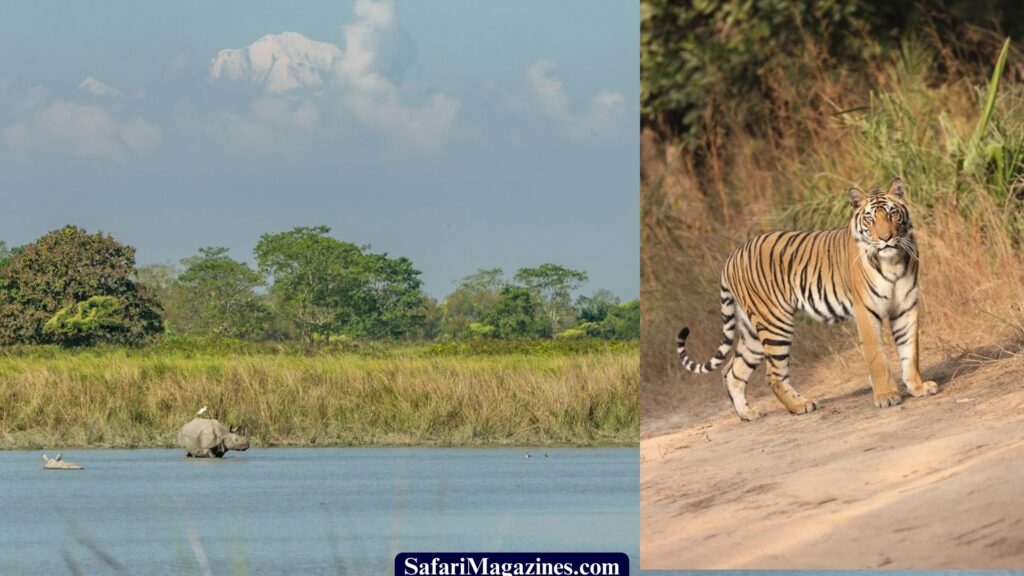
Located in the northeastern state of Assam, Kaziranga National Park covers an area of 440 sq-km. Celebrated for its population of Indian rhinoceroses, Kaziranga is also a UNESCO World Heritage Site and a haven for diverse wildlife.
- Here is a brief overview of Kaziranga National Park, India
- Location: Golaghat and Nagaon districts, Assam.
- Area: Approximately 440 sq-km.
- Best Time to Visit: November to April for pleasant weather and rhino sightings.
- Wildlife: Indian rhinoceros, Bengal tiger, Asian elephant, swamp deer, various bird species.
- Plants: Tall elephant grass, alluvial floodplain forests, aquatic vegetation.
- How to Get There: Nearest airport is in Guwahati, followed by a road journey to Kohora or Bagori.
- Limits and Restrictions:
- Entry permits required
- Guided safaris mandatory
- No plastic allowed inside the park.
- Recommendations:
- Explore the nearby tea gardens and cultural villages
- Take a river safari on the Brahmaputra River.
Ranthambore National Park
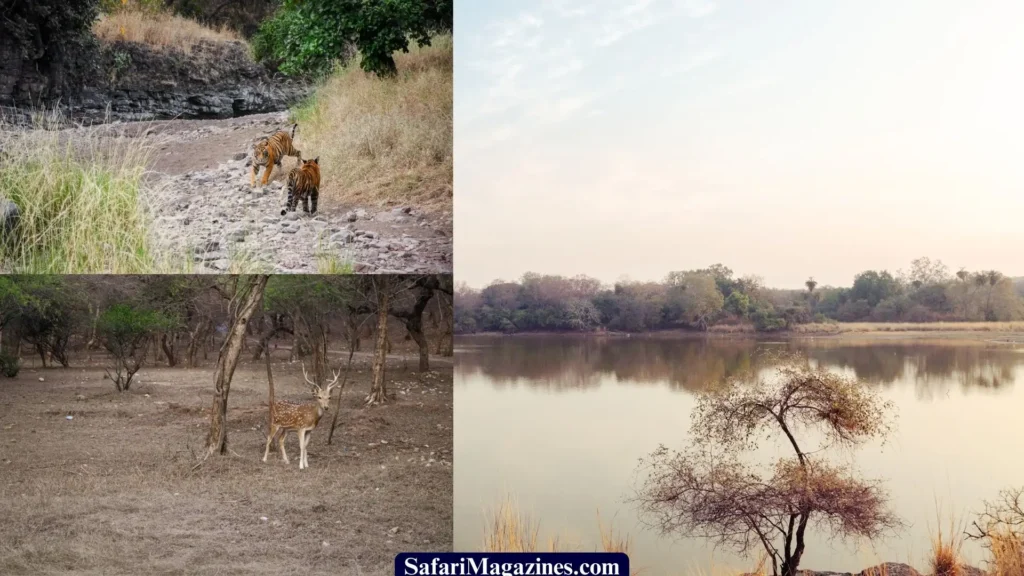
Nestled in the Aravalli and Vindhya mountain ranges in Rajasthan, Ranthambore National Park spans approximately 400 sq-km. Also home to the iconic Royal Bengal tiger, Ranthambore is renowned for its scenic beauty and rich biodiversity.
- Here is a brief overview of Ranthambore National Park, India
- Location: Sawai Madhopur district, Rajasthan.
- Area: Approximately 400 sq-km.
- Best Time to Visit: November to March for pleasant weather and tiger sightings.
- Wildlife: Bengal tiger, Indian leopard, sloth bear, striped hyena, various bird species.
- Plants: Dry deciduous forests with dhok, mango, and banyan trees.
- How to Get There: Nearest airport is in Jaipur, followed by a road journey to Sawai Madhopur.
- Limits and Restrictions:
- Entry permits required
- Limited vehicle entry per day
- Off-road driving is not permitted
- Recommendations:
- Visit Ranthambore Fort for panoramic views of the park
- Stay in luxury tented camps for a unique experience.
Continue reading: India’s Largest National Parks: Top 10 Natural Treasures Revealed
Sundarbans National Park, India
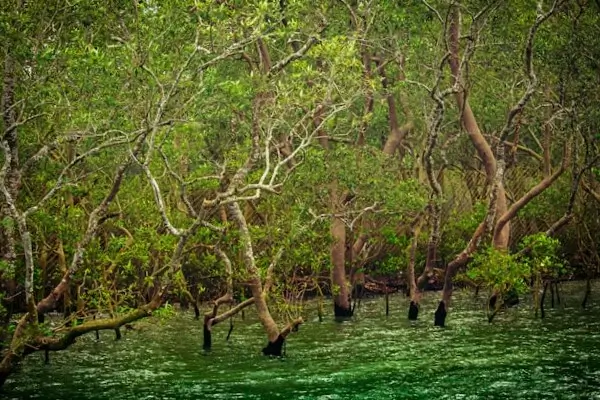
Stretching across the delta of the Ganges, Brahmaputra, and Meghna rivers in West Bengal. Sundarbans National Park covers an area of 9,000 sq-km of land and water, almost half of which is in India while the other half crosses Bangladesh. Famous for its mangrove forests and Bengal tigers, Sundarbans is a UNESCO World Heritage Site and a critical tiger habitat.
- Here is a brief overview of Sundarbans National Park, India
- Location: South 24 Parganas district, West Bengal.
- Area: Approximately 9,000 sq-km.
- Best Time to Visit: September to March for pleasant weather and tiger sightings.
- Wildlife: Bengal tiger, saltwater crocodile, Indian python, spotted deer, various bird species.
- Plants: Mangrove forests dominated by sundari trees, salt-tolerant grasses.
- How to Get There: Nearest airport is in Kolkata, followed by a road journey to Sonakhali or Godkhali.
- Limits and Restrictions:
- Entry permits required
- Guided boat safaris mandatory
- No swimming or venturing into prohibited areas.
- Recommendations:
- Take a boat safari to explore the maze of mangrove channels
- Visit the Sajnekhali Wildlife Sanctuary for birdwatching.
A1: National parks serve as protected areas where wildlife can thrive undisturbed, playing a crucial role in preserving biodiversity and maintaining ecological balance.
Continue reading: India’s Largest National Parks: Top 10 Natural Treasures Revealed
Bannerghatta National Park

Located near Bangalore in Karnataka, Bannerghatta National Park encompasses an area of 265 sq-km. Known for its diverse plants and animals, such as elephants, leopards, and Indian sloth bears, Bannerghatta offers visitors a unique wilderness experience.
- Here is a brief overview of Bannerghatta National Park, India
- Location: Near Bangalore, Karnataka.
- Area: Approximately 265 sq-km.
- Best Time to Visit: October to March for pleasant weather and wildlife sightings.
- Wildlife: Indian elephants, Indian sloth bear, Bengal tiger, various bird species.
- Plants: Mixed deciduous forests with sandalwood, bamboo, and eucalyptus trees.
- How to Get There: Nearest airport is in Bangalore, followed by a road journey to Bannerghatta.
- Limits and Restrictions:
- Entry permits required
- Restricted areas for visitors
- No feeding or disturbing animals.
- Recommendations:
- Visit the Bannerghatta Biological Park for a wide range of animal exhibits
- Participate in the safari for a chance to spot wildlife in their natural habitat.
Continue reading: India’s Largest National Parks: Top 10 Natural Treasures Revealed
Sanjay Gandhi National Park
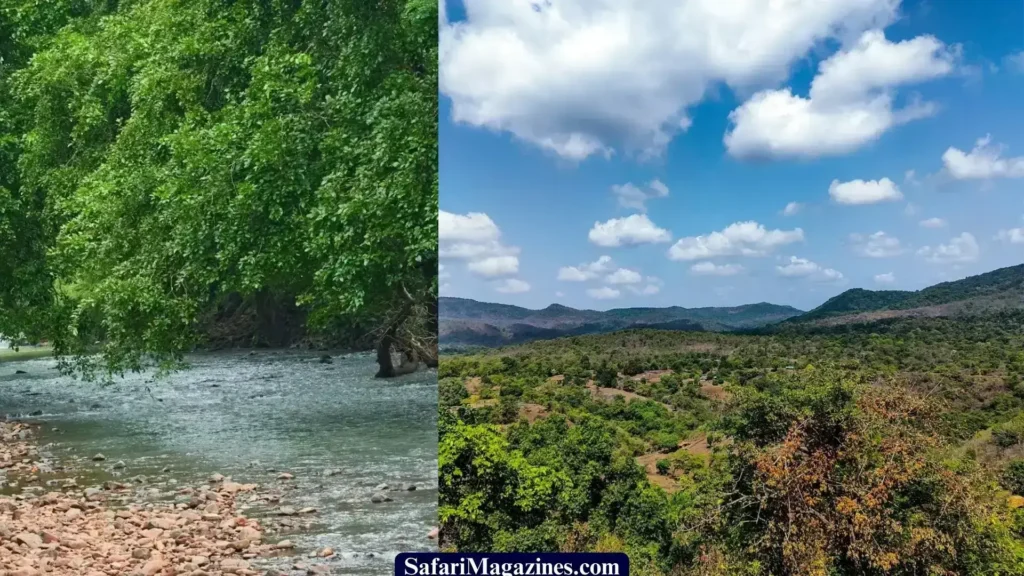
Situated on the northern outskirts of Mumbai, Sanjay Gandhi National Park spans over 110 sq-km. Even though it’s close to a crowded city, the park is home to many of wildlife, including leopards, deer, and numerous bird species.
- Here is a brief overview of Sanjay Gandhi National Park, India
- Location: Mumbai, Maharashtra.
- Area: Approximately 110 sq-km.
- Best Time to Visit: October to March for pleasant weather and wildlife sightings.
- Wildlife: Indian leopard, Indian sambar deer, barking deer, various bird species.
- Plants: Tropical and deciduous forests with teak, bamboo, and jamun trees.
- How to Get There: Nearest airport is in Mumbai, followed by a road journey to Borivali or Thane.
- Limits and Restrictions:
- Entry permits required
- Restricted areas for visitors
- No littering or feeding animals.
- Recommendations:
- Visit the Kanheri Caves for ancient Buddhist rock-cut sculptures
- Explore the nature trails for birdwatching and photography.
Continue reading: India’s Largest National Parks: Top 10 Natural Treasures Revealed
Mudumalai National Park, India
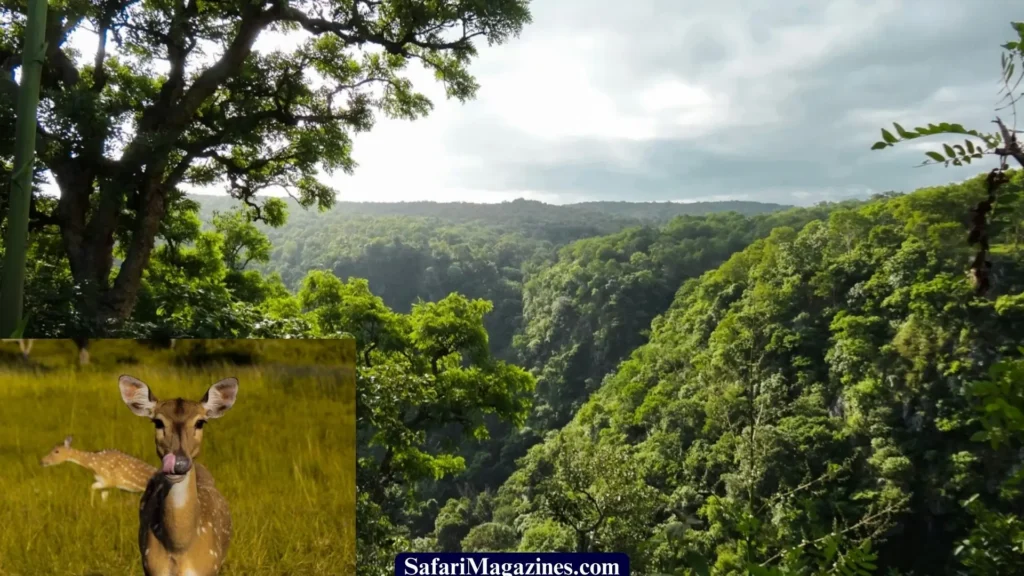
Nestled in the Nilgiri Hills of Tamil Nadu, Mudumalai National Park covers an area of 350 sq-km. This biodiverse place is home to endangered species such as Indian elephants, Bengal tigers, and Indian leopards, making it a popular destination for wildlife enthusiasts.
- Here is a brief overview of Mudumalai National Park, India
- Location: Nilgiri district, Tamil Nadu.
- Area: Approximately 350 sq-km.
- Best Time to Visit: December to June for pleasant weather and wildlife sightings.
- Wildlife: Indian elephant, Bengal tiger, Indian leopard, sloth bear, various bird species.
- Plants: Moist deciduous forests with teak, rosewood, and sandalwood trees.
- How to Get There: Nearest airport is in Coimbatore, followed by a road journey to Ooty or Gudalur.
- Limits and Restrictions:
- Entry permits required
- Guided safaris recommended
- Off-road driving is not permitted
- Recommendations:
- Visit the Theppakadu Elephant Camp for elephant interactions
- Stay in forest resorts for a tranquil getaway amidst nature.
Continue reading: India’s Largest National Parks: Top 10 Natural Treasures Revealed
Biodiversity in India’s Largest National Parks
The sprawling landscapes of India’s largest national parks harbor a treasure trove of biodiversity, has a many of plants and wildlife. So, from towering trees to elusive predators, these ecosystems are teeming with life, each species playing an important role in maintaining ecological equilibrium.
Tourism and Activities
Beyond their ecological significance, India’s national parks offer immersive experiences for nature enthusiasts and adventure seekers alike. From wildlife safaris to nature walks, visitors can enjoy the beauty of these landscapes while contributing to their preservation through sustainable tourism practices.
Challenges and Conservation Efforts
Despite their protected status, India’s national parks face myriad challenges, including habitat fragmentation, poaching, and human-wildlife conflict. However, concerted efforts by government agencies, conservation organizations, and local communities are underway to mitigate these threats and ensure the long-term survival of these invaluable ecosystems.
Government Initiatives
Recognizing the importance of preserving natural habitats, the Indian government has implemented various policies and initiatives aimed at enhancing the management and protection of national parks. So, from stringent anti-poaching measures to community-based conservation programs, these efforts are crucial for safeguarding India’s biodiversity for future generations.
Continue reading: India’s Largest National Parks: Top 10 Natural Treasures Revealed
Future of National Parks in India
As we stand at the cusp of a new era, the future of India’s national parks holds immense promise and potential. So, by embracing sustainable development practices and harnessing technological innovations, we can ensure that these pristine wilderness areas continue to thrive as bastions of biodiversity, inspiring awe and reverence for generations to come.
Related Articles:
- Earth’s Largest National Parks by Continent: Discover the World’s Wilds
- Discovering the Largest National parks of USA, where the magic meet the reality.
- Explore China’s Largest National Parks: Discovering Nature’s Grandeur
- Discover the majestic realm of the Festivals and Celebrations in India: and explore Indian Culture and Cuisine
- In India the soul of its culture is the Indian foods.
- If you interested in the test, this Indian food recipes is for you.
FAQs about Indian National Parks:
Q1: Why are national parks important for biodiversity conservation?
Q2: How do national parks contribute to eco-tourism?
A2: National parks offer immersive experiences for visitors, including wildlife safaris, nature walks, and camping, while promoting sustainable tourism practices that minimize environmental impact.
Q3: What are the major threats to India’s national parks?
A3: Habitat loss, poaching, and human-wildlife conflict pose significant challenges to the conservation of India’s national parks, highlighting the need for concerted conservation efforts.
Q4: What initiatives are being taken to protect India’s national parks?
A4: The Indian government has implemented various policies and programs aimed at enhancing the management and protection of national parks. So, this including anti-poaching measures and community-based conservation initiatives.
Q5: How can individuals contribute to the conservation of national parks?
A5: Individuals can support conservation efforts by practicing responsible tourism, spreading awareness about the importance of biodiversity, and supporting organizations dedicated to wildlife conservation.
